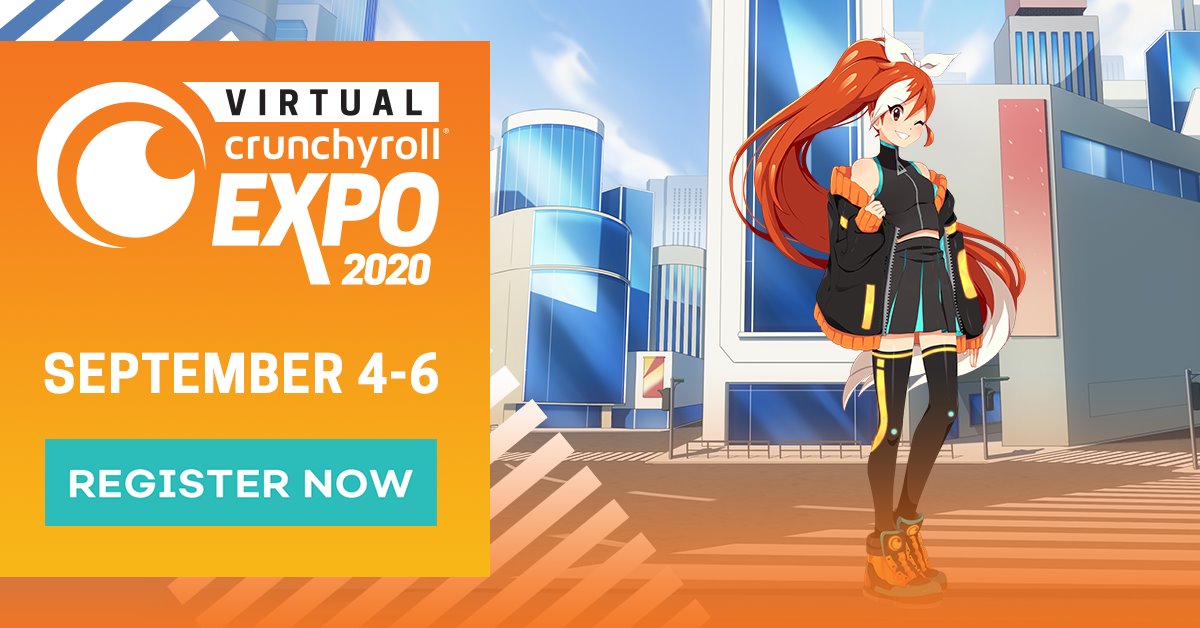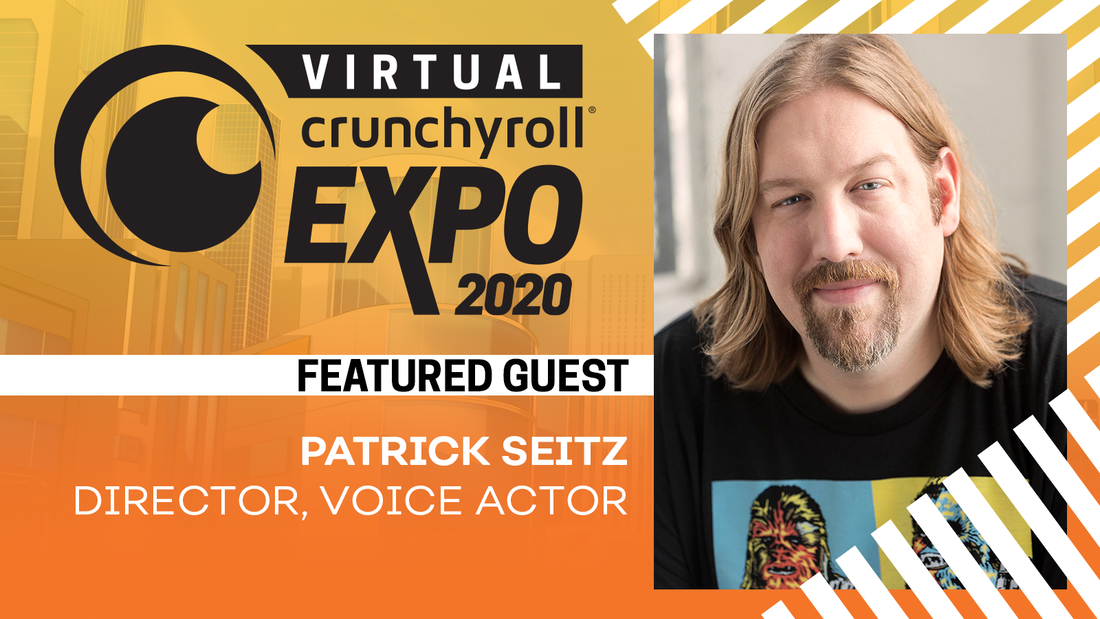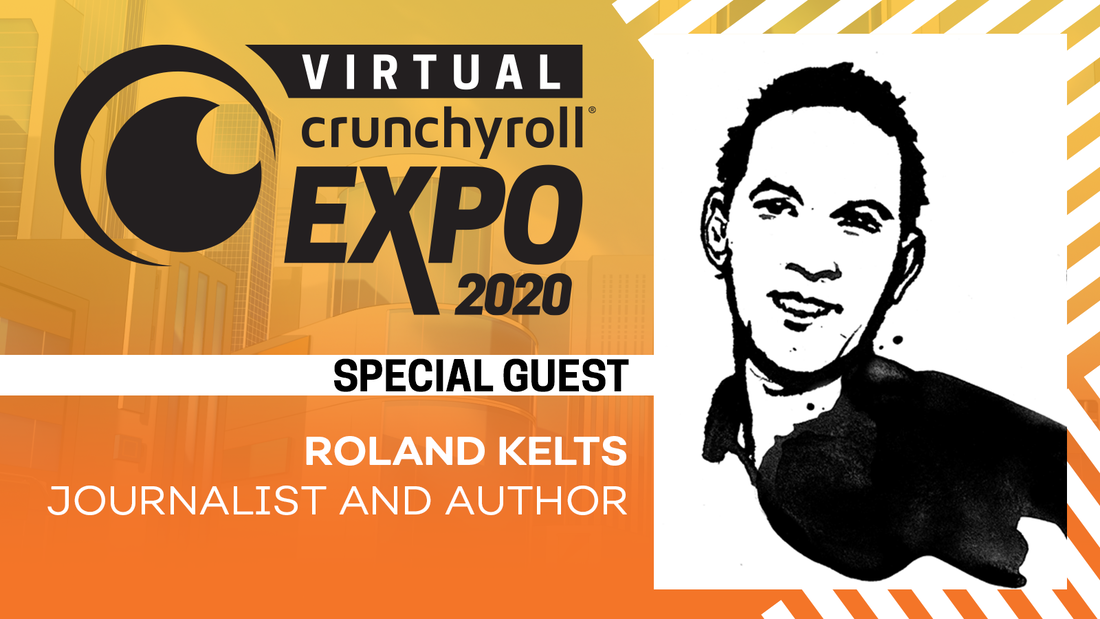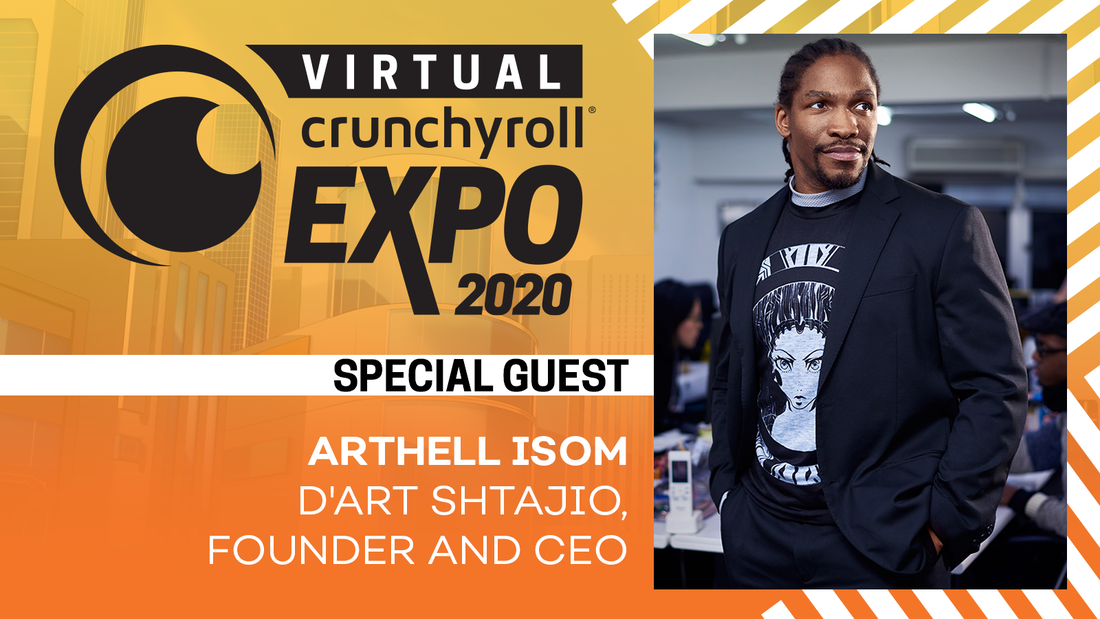|
Crunchyroll Expo 2020 is going virtual and all the fun and awesomeness is right around the corner! This weekend to be exact! (September 4-6) The schedule is quite impressive, and there are more guests and special events than we can even begin to discuss here. With that in mind we had the opportunity to talk to a few of the many upcoming guests and these mini interviews and their event schedule can be found below! We assure you that this isn't the last word we're going to have on this amazing event! Since Virtual Crunchyroll Expo is this weekend, make sure to register HERE. It's free so you have no excuse! Patrick SeitzA-to-J: Your career has spanned about two decades, how has the voice acting industry changed over that period of time? Patrick Seitz: When I started working in VO over twenty years ago, I feel like a lot of the folks I was coming in with were theater and/or on-camera folks who were just happy to find any genre in which they could act and pay some bills at the same time. Now, in large part thanks to the internet, there’s such an awareness of voiceover as a career. You’ve got a lot of new folks coming in with voice acting as their specific goal. Not acting in general, but voice acting. Which is fine—that’s certainly the corner of the larger tapestry where I’ve been living all these years—but I’ve never understood folks aiming for such a small target. If you want to act, you want to act; toss your net into the ocean and see what you dredge up. If you head out onto open water professing that you’re only going to reel in swordfish and swordfish alone, you may go hungry. Also, in terms of anime and localized video games, the concept of simuldubs has meant that the dedicated dub fan will never want for content—but we’re having to dub the shows and games as they’re being created. The days of having a completed series or game that you can localize with all the certainty therein seem to be behind us. A-to-J: The roles you've portrayed have been very varied over the years, do you find it difficult to adapt to certain characters or do you have a particular favorite archetype that you feel is your strength? Patrick Seitz: I don’t find it too difficult adapting to characters, but I think a lot of that hinges on the fact that I’m usually being cast in ways that play to my strengths. As far as archetypes go, I’m a fan of big, broad, and tragic. Evil, eloquent, or bestial. Zany and/or redemptive are good, too! A-to-J: Besides voice acting, you've also worked on scripting and directing. Do you have find it hard to juggle between these roles and is there a specific job that you prefer over the others? Patrick Seitz: I love them all! Ideally, I’d like to keep doing a mix of the three jobs for as long as I’m lucky enough to work in this field. The toughest part about juggling them is just that there are only so many hours in the day. When you’re directing, it’s an all-day commitment that has you locked in for weeks or months at a time. It can be hard to find the time for your own VO sessions, or even having the time/gumption to record auditions. Of the three roles, acting is the easiest insofar as that you show up, you do the thing, and you’re done. You don’t have to worry about the other characters, or the overarching plot. The director will keep you honest with what you need to know versus what’s superfluous information. You’re not up late at night, writing the cues or checking rewrites or stressing about casting. Patrick Seitz's Virtual Crunchyroll Expo panel info can be found HERE. A Conversation with Patrick Seitz Friday, September 4 from 12:30 - 1:15 PM PT Stage: Hime Stage Roland KeltsA-to-J: The world of Japanese pop culture has evolved greatly since you released "Japanamerica", what are some of the changing trends you've noticed over the years versus what you wrote in 2006? Roland Kelts: I think the explosion of interest in Light Novels, particularly the isekai genre and the longing for fantasy worlds, has been a notable trend — and the way Light Novels, anime, manga and video games have become so tightly bound as transmedia properties. Also, I’ve been surprised by the rising and enduring popularity of live events in Japanese pop culture. While I was writing JAPANAMERICA, the general consensus was that the high-speed internet would dampen interest in attending live events. The opposite happened. Live music and so-called 2.5-Dimensional musical events have become huge components of Japanese pop culture. And they help sell a lot of merchandise! A-to-J: The anime fandom in particular has morphed and grown over the years, do you think this growth is something that can continue and if so, what are some of the new obstacles the industry in Japan might have to overcome? Roland Kelts: It will absolutely continue. But it won’t happen inside Japan. Japan’s birth rate is low and continues to drop, and younger Japanese have many more entertainment options at their fingertrips on which to spend time and money. Growth will continue outside Japan — and that’s the problem. The industry’s biggest major obstacle is its own provincialism. That was fine when anime producers could rely upon a large and growing domestic audience, network TV contracts and sales of physical products (VHS, DVD) and merchandise. But when the expansion is happening in China and the Middle East and Latin America and elsewhere, and when it requires smart investment strategies, transmedia properties and monetizing streaming contents, the industry needs to think bigger. A-to-J: In recent years there are other aspects of Japanese pop culture, like music and fashion, that have experienced large growth. Do you think there are any other aspects of Japanese pop culture that have yet to be tapped into in the West? Roland Kelts: I used to say there were plenty, but I’m not sure anymore. The internet seems to find an audience for everything. I do think American audiences would respond well to some of the more professional 2.5-Dimensional shows, which sometimes feature amazing talents and stagings over here but are currently too expensive to tour overseas. But more than pop culture, I think there’s a lot of traditional rural Japanese culture, food and Japanese literature that have barely been touched by the West. Arthell IsomA-to-J: You've been in the anime industry for many years, how have you adapted what you learned working for other studios to you own? Arthell Isom: D’Art Shtajio creates 2D anime based on the Japanese animation pipeline. So a lot of what we do has been taught to us by our Japanese peers and or directly brought over from our work experience here. A-to-J: Like all fandoms there are some arguments on what constitutes "anime" have you encountered any negativity regarding your studio being black-owned? Arthell Isom: I think you’re always going to experience some sort of toxicity in fandom no matter what you do. So we ignore the silly stuff. Choosing to focus on the encouragement and support we get from our fans instead. A-to-J: What are some of the long-term goals you want to see D'ART Shtajio achieve? Arthell Isom: Some of our long term goals include producing feature films and entire series in house. Roland Kelts & Arthell Isom Virtual Crunchyroll Expo info can be found HERE. Anime and Race Friday, September 4 from 5:15 - 6:15 PM PT Stage: Hime Stage Online conventions have become the norm in 2020, but Virtual Crunchyroll Expo looks to be a very unique one with its unique and diverse lineup so we really encourage every to register and make some time in your weekend for some of the amazing events and panels!
Virtual Crunchyroll Expo Website: https://expo.crunchyroll.com/
0 Comments
Leave a Reply. |
SearchContributors◆ Emily
◆ Ivan ◆ J.D. ◆ Janette ◆ Manuel Archives
June 2025
|
© 2014-2025 A-to-J Connections. All Rights Reserved.






 RSS Feed
RSS Feed